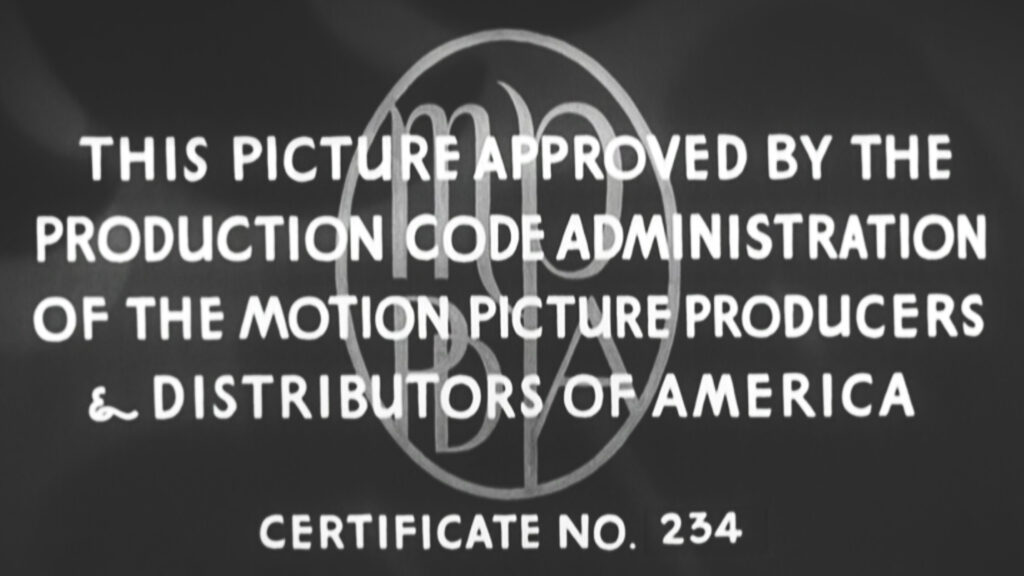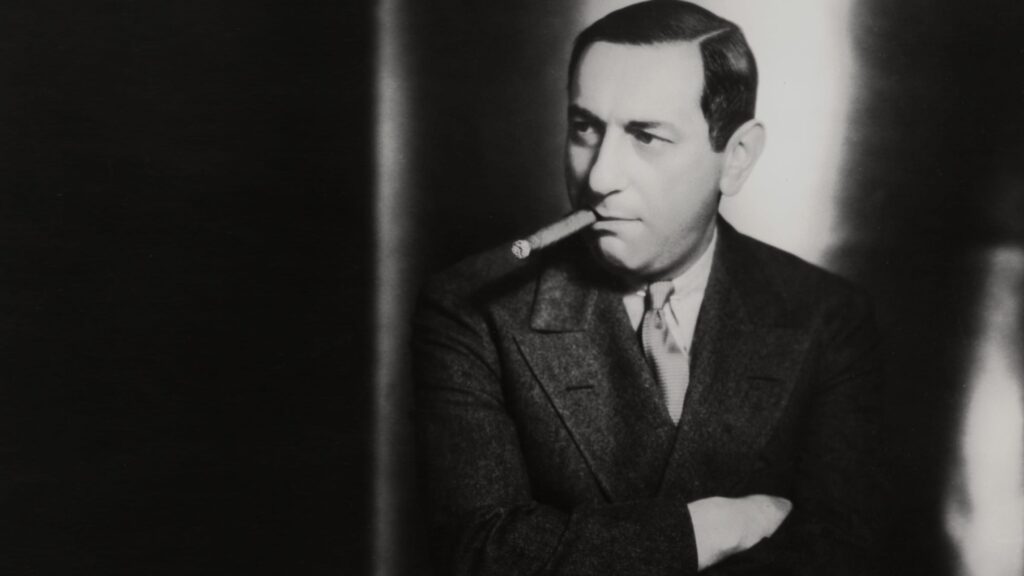A look at the impact on filmmaker Ernst Lubitsch’s career under the constraints of the Hays Code and how it affected his legacy.
Going back through film history, one could see how, starting in the 1970s, basically any topic could be explored on the screen. Around the ‘40s, one could see how films started to be highly sanitized and selective in on-screen depiction. Assuming it is due to the innocence of the times, one explores further. What do they find? Films that predate 1935 are anything but innocent, sanitized, or selective. What accounts for this virtuous gap between the ‘30s and the ‘70s? The answer: The Motion Picture Production Code, commonly known as the Hays Code. The Code is rightfully notorious for being oppressive censorship yet offering both positive and negative aspects. Its tremendous impact on film and their makers can be seen in Ernst Lubitsch’s critical reception, on-screen representation, and the subjects explored in post-Code years.
Film took the world by storm in the 1910s and, as with any explosive medium, regulation was imminent. Risqué films proudly displayed on screens, accompanied with rumors and scandals that involved any sin a “journalist” could conjure up, resulted in religious and civic groups pressuring for restrictive legislation against the screen (Vaughn 130). Hollywood studios tried to convince the public that they could govern themselves by creating the Motion Picture Producers and Distributors of America (MPPDA), appointing former Postmaster General William Hays to lead (Vaughn 128). The Hays Code would result in a multitude of stringent rules prohibiting and limiting: profanity, sex, nudity, violence, depictions of religion and law, crime, and even dancing, to name a few (Shurlock 143). Before the Hays Code was officially enforced in 1934, its predecessor was introduced a decade earlier, embodied in “The Formula.” Three years later, it was coupled with “Don’ts and Be Carefuls.” Both were meant as guidelines for screenwriters. However, Hays himself felt this was merely “window-dressing” because he had virtually no way of enforcing them (Vaughn 129). The Great Depression also laxed whatever little censorship there was for hopes to bring in audiences. These factors resulted in a brief period known as Pre-Code Hollywood which led to a boom in films that further contributed to the Catholics belief that Hollywood was the “fortress of filth” (Black 167).

Pre-Code specifically refers to 1930-1934 when creative freedom was at its peak and many stars’ careers were made (a detriment to some when transitioning later), including: Edward G. Robinson, James Cagney, Miriam Hopkins, and Mae West. Not only were stars launched, but genres as well. The Divorcee (1930) launched the adulterous marriages story, whether comedic or dramatic. A year later, Little Caesar popularized the gangster drama as Dracula did for horror. These films and their subsequent copycats were met with fierce opposition by censors. As expected, they were also box office hits with some garnering prestigious awards/nominations. Just as stars and genres were clicking with audiences, directors were as well.
Continuing his hot streak, Ernst Lubitsch hit an all-time high in the Pre-Code Era, being regarded as one of the finest filmmakers of the ‘30s. As Hitchcock had the epithet “Master of Suspense,” Lubitsch had the “Lubitsch Touch”—both of which were used as selling points in their films’ advertisements. Although this “Touch” is undefined, it is generally agreed to be, at its very base, “the ability to communicate efficiently and often with irony or sly innuendo, using no words, only visual means” (McCormick 208). Lubitsch’s European “Touch” meant stories that found humor in marriage, sex, crime, and authority that were ahead of traditional American beliefs. Nonetheless, he found great success in America. This mass success at poking fun at traditional roles could be seen as innocent jest, or viewed as destructive ridicule. At times, the “Lubitsch Touch” had all the subtlety of a gentle breeze and at others, of an atomic bomb.
In 1932, Lubitsch made Trouble in Paradise, which is not only thought to be Lubitsch’s best film, but also epitomized his style, appeal, and, to some, his indecency. The film is about two thieves, Gaston and Lily, who, seduced by each other’s talents, fall in love and galivant around the world, thieving and scheming whenever they can. The crooks hook onto an owner of a perfume company, Mariette, to con her out of her fortunes. What ensues is implications and depictions of: adultery, larceny, assault, impure morals, devaluing marriage, and revelations that the aristocrats are just as crooked as the lowly thieves. There is one instance where marriage is explicitly mentioned, “Marriage is a beautiful mistake which two people make together” (Trouble). Most detriment to any later rescreenings, the sinful protagonists ride off into the sunset, misdeeds unpunished. Even the film’s opening titles contain what would become inflammatory. The words “Trouble in” appear onscreen and, as the word “Paradise” completes the title, a bed fades onscreen (McCormick 214). A not-so subtle message to kick off the film. So, if Ernst Lubitsch was well-known and anticipated before his arrival to America in 1923, his films were critical and financial successes, and influenced directors like Alfred Hitchcock, Billy Wilder, Orson Welles, John Ford, and Francois Truffaut—why is he unfamiliar with audiences today? Well, like a club to the knee at the start of a marathon, Lubitsch (and Hollywood) were about to lose the window-dressing Code and succumb to the new, stringent, authoritative Code.

The lack of regulation and all of these films and creators on the rise did not go unnoticed. Predominantly, the Catholics blamed Hays and his ineffective Code. Some took to anti-Semitic sentiments, blaming the “Jewish Moguls” who controlled the industry for sinful pictures (Vaughn 134). The Catholic group the Legion of Decency was created and began to rate movies independent of Hollywood. It used its influence to affect box-office performance by boycotting films deemed “condemned,” backing a policy to either “purify Hollywood or destroy Hollywood” (Black 11). In response to the pressure from the American-Catholic population, Hollywood created the Production Code Administration (PCA), which required all films to be submitted to the PCA for approval before applicable for release. To helm the PCA, devout Catholic Joseph Breen led the filtering of films through Catholic eyes (McCormick 237). This created an interesting dynamic, as one historian noted, where Jewish-owned studios were essentially pushing Catholicism to the world (Vaughn 143).
How might film and society be different today without the Hays Code? Given the Catholics iron-grasp of the industry, other religions were not as promoted or were represented by Catholic standards. Not only did members of the Legion of Decency hold anti-Semitic beliefs, but also the head of the PCA himself. Breen, once wrote, “the fact is that these damn Jews are a dirty, filthy lot” (Doherty 83). Even though it violated the Code in many ways, the Pre-Code film Taxi! has James Cagney displaying his fluent Yiddish (Mashon). Actor Anna May Wong was openly critical of the depiction of Chinese people in films as always being stereotypical or villains.
Thinking of America in the 1930s, it would be incredibly difficult to list all the different cultures with interesting stories to tell especially with the influx of European and Asian immigrants fleeing the upcoming World War. A minute amount of these cultures ever made it to the screen unmolested by the Code. With a ban on miscegenation, how were opportunities taken from minorities? Wong was denied many roles because she was not allowed to perform scenes with the white male lead (Vaughn 148). Ernst Lubitsch’s depictions of strong women who were morally right yet pursued men and were sexually active became nonexistent. Women were confined to roles of the homemaker or the femme fatale. If they were not virtuous and upheld the sanctity of marriage, they risked not being on screen or making it to the credits. Critical thinking would be more prominent as well. Films with criminals or unruly behavior end with heavy-handed signaling of what is right and what is wrong. While the good outweighs the bad, there was some good intent in creation of the Code.
Will Hays believed that film was an incredibly powerful medium and that cinema could carry the best music, literature, science, and medicine to nearly everyone and possessed educational, moral, and inspirational potential . . . that it could bring civilization to “new heights” (Vaughn 135). The Catholics seemed to believe that the screen was a reflection of society. If the screen was purged of wrongdoing, then maybe the world would follow suit (Vaughn 137). Some of the great moments of cinema are products directly of the Code. Rick Blaine letting Ilsa go in Casablanca, the cuckoo clock indicating the consummation of the (freshly divorced) marriage in The Awful Truth, and any noir where the bad guys betray each other or are gunned down by the police. Where sex and violence could not be shown, subtlety and metaphor were to be used—often adding richness. As director Edward Dmytryk noted, “[The Code] had a very good effect because it made us think. If we wanted to get something across that was censorable… we had to do it deviously. We had to be clever. And it usually turned out to be much better than if we had done it straight” (Grant 16:42-17:01). The Code also saved studios time and money by creating one national censor, rather than having to gain approval from state censors (McCormick 239). Despite these positives, the Code, like all tyrannical powers, inevitably, was usurped.
Post-World War II, films starting deviating from the Code in increasingly noticeable ways. Hitchcock’s Notorious (1946) figured a loophole in the “excessive kissing” rule by having the kissers break apart every 3 seconds—resulting in a kissing scene three minutes long. Otto Preminger’s Anatomy of a Murder (1959) was approved with sexual language because it was deemed required and realistic clinical language in the courtroom drama, which dealt with murder and rape. Later, Sidney Lumet’s 1964 film The Pawnbroker was approved with depictions of topless nudity because it was deemed vital for plot and to make a dramatic point (Doherty 3). As with most works that are banned or notorious, the Catholics realized that the only people paying attention to their condemned lists were those who wanted to know what to watch. With decisions validating artistic merit and with the puppet strings of the Catholics snipped—the Code was on its way out. International competition from film movements like Italian Neo-Realism and the French New Wave forced American films to step up their maturity. However, the most deciding factor came in 1952, when the Supreme Court recanted a previous decision and asserted that film was protected under the First Amendment in Burstyn v. Wilson (Green).
The abolishment of the Hays Code resulted in a making up for lost time mindset in the film industry. Excessive violence and nudity took to the screens like the plague—or COVID-19, to be more topical. This overcorrection essentially canceled out the past oppression and ushered in the New Hollywood. This means that the Motion Picture Production Code stagnated film to limited representation, singular views, and silenced ideas and creators for no sustaining purpose. In a way, it is almost harder to accept that many Pre-Code films and artists have been forgotten because they could not transfer to the Code Era. Lubitsch is a prime example of that. He revolutionized (theorized to have created) what Hollywood would become, especially with romantic comedies. It is up to film historians, buffs, lovers, makers, or whatever the title, to bring these neglected artists back to the spotlight.
.
.
Works Cited
Bell, James. Mashon, Mike. “Pre-Code: Hollywood Before the Censors.” British Film Institute (BFI), 25 April 2019, https://www2.bfi.org.uk/news-opinion/sight-sound-magazine/features/deep-focus/pre-code-hollywood. Accessed 17 Mar. 2021
Black, Gregory D. “Hollywood Censored: The Production Code Administration and the Hollywood Film Industry, 1930-1940.” Film History, vol. 3, no. 3, 1989, pp. 167–189. JSTOR, jstor.org/stable/3814976. Accessed 17 March 2021.
Doherty, Thomas. “A Testimonial Dinner for Joseph I. Breen.” The Moving Image: The Journal of the Association of Moving Image Archivists, vol. 11, no. 2, 2011, pp. 83–89. JSTOR, jstor.org/stable/10.5749/movingimage.11.2.0083. Accessed 17 March 2021.
Doherty, Thomas. “SEX, VIOLENCE, AND ADULT THEMES: The MPAA and the Birth of the Film Ratings System.” Cinéaste, vol. 42, no. 4, 2017, pp. 10–15. JSTOR, jstor.org/stable/26356782. Accessed 17 March 2021.
Grant, Patrick. “American Cinema – Film Noir (PBS Documentary).” YouTube, 12 May 2018, www.youtube.com/watch?v=zaeA1jHt0X8. Accessed 17 March 2021.
Green, William-Crawford. “Burstyn v. Wilson (1952).” The Free Speech Center. 2009, https://mtsu.edu/first-amendment/article/92/burstyn-v-wilson. Accessed 17 March 2021.
McCormick, Rick. “PUSHING THE BOUNDARIES IN PRE-CODE HOLLYWOOD, 1931–34.” Sex, Politics, and Comedy: The Transnational Cinema of Ernst Lubitsch, Indiana University Press, Bloomington, Indiana, USA, 2020, pp. 203–243. JSTOR, jstor.org/stable/j.ctv1g809c7.9. Accessed 17 March 2021.
Shurlock, Geoffrey. “The Motion Picture Production Code.” The Annals of the American Academy of Political and Social Science, vol. 254, 1947, pp. 140–146. JSTOR, jstor.org/stable/1026152. Accessed 17 March 2021.
Trouble in Paradise. Dir. Ernst Lubitsch. Paramount Pictures, 1932. Film.
Vaughn, Stephen. “The Devil’s Advocate: Will H. Hays and the Campaign to Make Movies Respectable.” Indiana Magazine of History, vol. 101, no. 2, 2005, pp. 125–152. JSTOR, jstor.org/stable/27792620. Accessed 17 March 2021.

